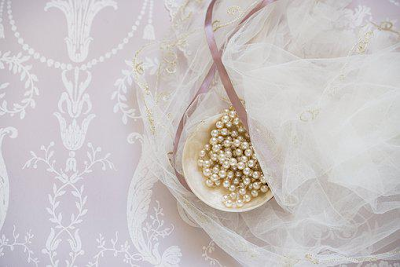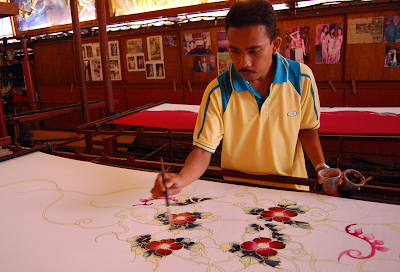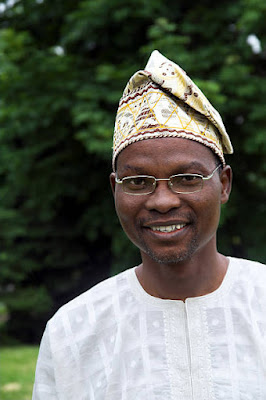Featured
- Get link
- X
- Other Apps
HISTORY OF DRESS IN SOUTH AMERICA
The Amazon Basin, the world's biggest tropical rain forest; the Andes, the world's second-highest mountain range; and the coastal deserts of Peru and northern Chile, which are among the driest locations on the planet, make up the huge South American continent.
The nature of these locales (as well as places like the hot, humid Atlantic coast and chilly, rainy Patagonia) naturally affected the primitive South Americans' clothing.
Clothing, footwear, hairstyles and headdresses, jewelry, and other personal decoration are all examples of dress (for example, piercing, tattooing, and painting).
The Amazon Basin and its Coasts.
The Tupinambás, who wore feathered headdresses, were discovered by Europeans coming on the coast of what is now Brazil in the early sixteenth century, and early depictions of indigenous wearing feathers became short hand for Native Americans.
Most Amazonian cultures still use feathered or porcupine quill headdresses for everyday or festival usage.
Body painting or tattoos, and/or earplugs or earrings, bead, fiber, animal bone or tooth necklaces, bandoleers, armbands, leg bands, and bracelets, nose and lip and hair ornaments—an infinite variety of ornamentation—and, among Brazilian Kayapó and Botocudo males, ternbeiteras, large circular wooden discs inserted in the lower lip The Cofáns of Colombia and Ecuador, the Záparos of Ecuador, and the Shuars and Achuars of Ecuador and Peru previously wore bark-cloth tunics, wrap skirts, or (for women) garments tied over one shoulder.
Male Cofáns now dress in knee-length tunics made of commercial cotton material.
Loom-woven cotton clothing are used by populations in the western Amazon, such as the Cashinahuas (Dwyer, 1975) and Shipibos in Peru, and the Kamsás in Colombia, with long tunics (commonly called kushma) for men and tube skirts for women.
Tunics are worn by both male and female Ashaninkas (Campas) and Matsigenkas (Machiguengas).
The Shuars and Achuars of Peru and Ecuador wear woven cotton wrap skirts for males and a body wrap draped over one shoulder for women.
A braided belt with hanging wefts of human hair is occasionally put around the male wrap (Bianchi et al. 1982).
When visiting cities or if they have been Christianized, contacted tribes in Amazonia may opt to wear traditional attire at times and Euro-American garb at other times.
The now-extinct Onas of Tierra del Fuego, on the icy, southern point of South America near Antarctica, wore fur robes, caps, and moccasins but did not weave.
Andean Countries.
The Inca Empire's former countries (most of Ecuador, Peru, Bolivia, Chile, and a portion of northern Argentina) are notable for a number of reasons.
The first is that organic material, such as mummy bundles with fully clothed cadavers, has been preserved in the Pacific coastal deserts.
Other archaeolog ical relics, such as realistic pottery depicting clothed individuals, when paired with the narratives of the Spanish conquistadores and other historical sources, enable us to recreate ancient peoples' clothing.
It is easy to make broad generalizations about the many local and historical highland and coastal clothing traditions that are together referred to be Andean.
First, by the Common Era, the primary fabrics, colors, and many technical elements of later apparel were in use.
New World cotton and camelid (llama, alpaca, vicua, and wanaku) fibers were handspun and handwoven on basic stick or frame looms.
Relbunium and cochineal (red to purple), indigo (blue to black), and a multitude of yellow-producing plants were all employed to great effect.
Embroidery, feathers, pearls, and gold or silver discs were often used to embellish garments for the affluent or high-ranking.
Second, pre-Hispanic clothes were woven to size using almost every method known to current Euro-American weavers, and they were variants of the square or rectangle.
Jewelry was different according on sex, age, and social status.
Third, textiles were four selvage, which meant that before the garment came off the loom, all four edges were completed.
It's unusual to come across a pre-Hispanic Andean clothing that has been cut; tai loring arrived with the Spanish.
Fourth, during key life-cycle events and religious rites, fabric was highly prized and traded or sacrificed.
Age, gender, marital position, social, political, religious, economic standing, and ethnicity were all expressed via clothing.
The Coast of Peru.
Male ritual attire included a headband or turban, waist-length tu nic (sometimes with short, attached sleeves) or tabard, breechcloth or kiltlike wrap skirt, mantle, and sometimes sandals, and a small bag, usually used to hold coca leaves, by the time of the Paracas culture (c.
600–175 B.C.E.) on the south coast of Peru (c. 600–175 B.C.E.).
The size, form, and patterning of Paracas clothing were all the same, but the embellishment differed.
Many para cas clothing, for example, were intricately embroidered, and many had fringes, tabs, or edgings attached to them (Paul 1990).
Coastal male tunics and tabards featured vertical warps and neck slits, whilst female tunics had horizontal warps, shoulder stitching, and a horizontal neck opening (Rowe and Cohen 2002, p. 114).
A mantle was also worn by women.
On the tunic, breechcloth, and tur ban, male clothing from the Chimu civilization (c. C.E. 850–1532) of the north coast were occasionally woven in matched sets with matching weave patterns and designs (Rowe 1984, p. 28).
Neckpieces, pectorals, bracelets, crowns, nose rings, and earplugs made of copper, silver, gold, Spondylus shell, turquoise, feathers, and combinations of these materials were found in the royal tombs of Sipán of the Moche civilization (c. C.E.100–700).
Inca Dresses And Clothes
The Incas ruled over a huge empire from their heartland in Cuzco, Peru, between c. 1300 and 1532, when the Spanish came.
The Incas were able to recognize and govern conquered people by requiring them to wear their customary attire, headgear, and hairstyle.
The attire of the Highlands differs from that of the coast.
Because of the cold, most garments were made of camelid hair.
Rowe (1995–1996, p. 6) describes Inca clothing as having a characteristic embroidered edging that combined cross-knit loop thread with overcasting, with striped edge bindings on finer fabrics (called qumpi, frequently double-faced tapestry) and solid bindings on plainer textiles (awasqa).
The Incas considered fabric to be important, even holy, and burnt beautiful cloth as sun sacrifices (Murra 1989 [1962]).
In the south of the empire, Inca women wore an aksu, and in the north, anaku, an ankle-length square or rectangular body wrap.
It was wrapped over the arms and then pulled up and placed over each shoulder with a tupu, a stickpin made of wood, bone, copper, or silver or gold for higher rank ladies.
A string with hanging Spondylus shell pendants was used to link the tupus.
The aksu was kept closed at the waist by a chumpia, a broad belt with a woven pattern.
Then came a lliklla, a mantle with a stickpin (t'ipki; later also called tupu) to keep it closed, and an istalla, a little pouch for coca leaves.
Some women wore wincha, a form of head cloth, while some upper-class ladies wore aaqas, a type of head cloth (Rowe 1995– 1996).
The unku, a sacklike, sleeveless, knee-length tunic, a yakolla, a mantle, a wara (breech cloth), ch'uspa (coca leaf bag), and a llautu were among the male clothes (headwrap).
The Spanish dubbed Inca noblemen orejones because they wore huge gold paku, earplugs that distended their bottom earlobes (big ears).
Rowe (1995–1996) found that all sexes wore usuta, hide, or plant-fiber sandals.
The Aymara-speaking chiefdoms of Peru's and Bolivia's altiplano deserve special note since their territory was famed for large camelid herds and exquisite textiles (Adel son and Tracht 1983).
Belts, mantles, tunics, ch'uspas, and aksus are still worn by Quechuas and Aymaras, but the iconic gathered skirt, fitted blouse, shawl, and bowler hat are more recent for Aymara females in the altiplano.
The Spanish Conquest
New cloth-making equipment (treadle looms, carders, spinning wheels), new fibers (sheep's wool and silk), and new designs were all brought by the Spanish.
Upper-class male locals used a combination of Inca and Spanish clothing soon after the conquest: an Inca unku with Spanish knee breeches, stockings, shoes, and cap (Gua man Poma).
After the great indigenous revolts of the 1780s, the Peruvian government outlawed the wearing of the Inca headband, tunic, mantle, and other insignia of the Incas, including jewelry engraved with the image of the Inca, or sun.
Fine Inca qumpi unku, on the other hand, were still being created and worn throughout the colonial era (Pillsbury 2002).
Although poncho-like garments were used before to the Spanish invasion, the majority of males wore tunics with sewed-up sides.
The open-sided poncho with that name was originally mentioned in a 1629 account of the Ma puches (Araucanians) of Chile (Montell 1929, p. 239).
Andean Indigenous Clothing of the Present.
In the early twenty-first century, traditional Andean clothing is a combination of pre-Hispanic and Spanish colonial fashions.
In Peru, the chullu (knitted hat with earflaps) worn by men and the montera (Spanish flat-brimmed hat worn by ladies) worn by females represent indigenous identity, with variations in the hats denoting the wearer's community.
In Bolivia and Ecuador, a variety of headwear denote ethnicity, and one ethnic marker for men in three Ecuadorian tribes (the Saraguros, Caars, and Otavalos) and one Bolivian group (the Tarabucos) is long hair braided.
The Tarabucos are also noted for their distinctive headwear that resembles a helmet (Meisch 1986).
Males still wear versions of the Inca tunic in several communities, including the Q'ero in Peru (Rowe and Cohen 2002), the Chipayas in Bolivia, and the Saraguros in Ecuador (Meisch 1980–1981), while females in Otavalo, Ecuador, wear the closest in form to Inca women's dress worn anywhere in the Andes (Meisch 1987, p. 118).
The anaku, now a wrap skirt, handwoven belt, lliklla, occasionally a tupu, and characteristic hat are still worn by indigenous ladies of numerous ethnic groups across northern Ecuador, while men wear ponchos and felt fedoras.
Males in the Cuzco region of Peru wear the chullu, or poncho, and occasionally handwoven wool pants, or Euro-American style dress, whereas women are more conservative and wear short jackets and sometimes vests over manufactured blouses and sweaters, and pollera with llik llas, skirts with handwoven belts held closed with a tupu, or safety pin.
Numerous women in many villages still take pleasure in their ability to weave exquisite fabric using pre-Hispanic technique.
Small differences in women's clothing, such as the length of their polleras and the presence of fringe on their monteras, suggest confidence in the Ausangate area south of Cuzco (Heckman 2003, pp. 83–84).
Women's clothing (vests, hats, gathered skirts) in the Corporaque region (southern Peru) is elabor orately machine-embroidered in small workshops, despite being quite European in form (except for their carrying cloths) (Fe menias 1980, p. 1).
The importance of dress as an ethnic marker is Andean, despite the fact that the technology is European.
Many indigenous people wear usuta, or truck tire sandals, throughout Bolivia, Peru, and Ecuador, but alpargatas, or handmade cotton sandals, are worn in northern Ecuador.
Despite the fact that Colombia's indigenous population is limited, communities in two major highland areas have distinct clothing styles.
The Kogis (Cágabas) and Incas of the Sierra Nevada de Santa Marta on the Atlantic coast wore long, cotton belted tunics over tight leggings and a tiny, round hat, cotton and pointed for the former and flat topped fiber or cotton for the latter.
Men also have a mochila, a cotton bag in which they keep their coca leaves and lime gourd.
Women wear a wraparound garment similar to the aksu, which is wrapped around the torso, tied over one shoulder, and belted at the waist.
Following the invasion by the Spanish, the Páezes of southwest Colombia evolved a distinctive clothing, forsaking simple cotton wraps.
A short, wool poncho-like coat and a wool wrap skirt are the main distinguishing aspects of male clothing.
Children in the Andes often wear a wrap skirt until they are potty trained, at which point they dress like adults.
Native peoples continue to wear indigenous clothing to identify themselves as ethnic groups, combining pre-Hispanic and European technologies in the process.
See also:
References And Further Reading:
- Get link
- X
- Other Apps











